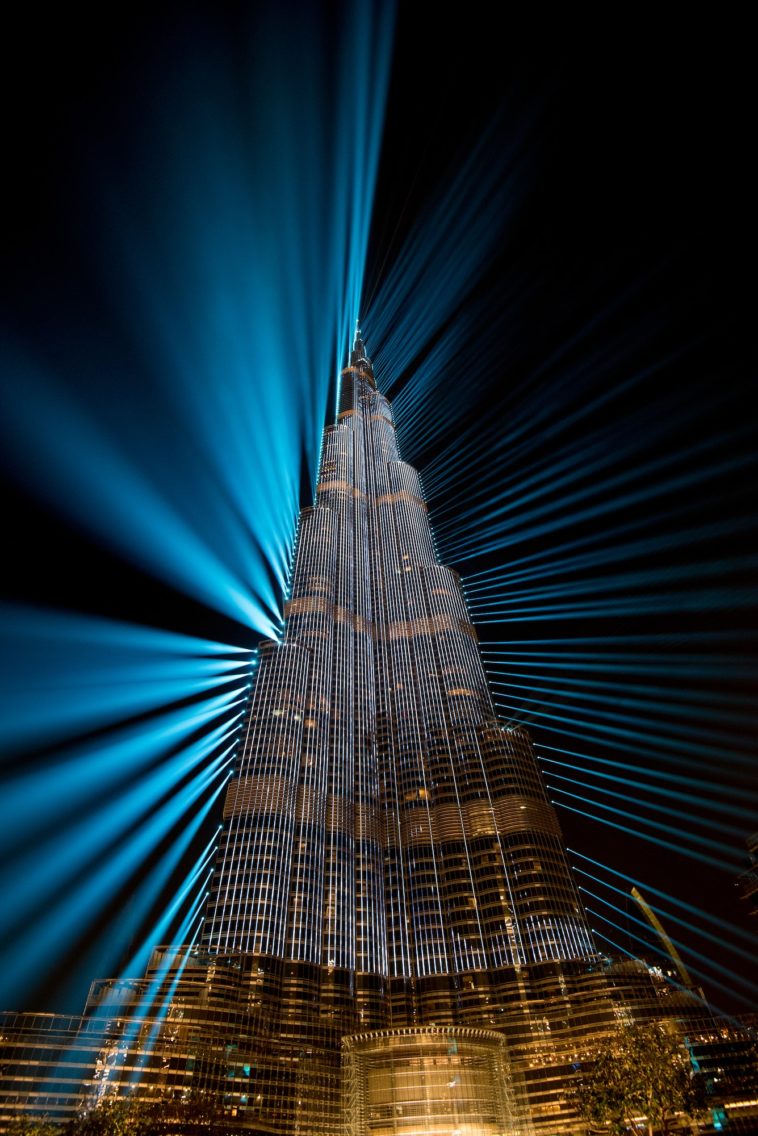Originally named Burj Dubai before its grand opening, the Burj Khalifa stands as an architectural marvel in Dubai, United Arab Emirates. As the world’s tallest human-made edifice, it reaches a staggering height of 829.8 meters. The construction of this iconic landmark kicked off on September 21, 2004, and was officially completed with an exterior finish on October 1, 2009. Opened to the public on January 4, 2010, the Burj Khalifa serves as the centerpiece of the expansive 2-kilometer development area termed as Downtown Dubai. The site is strategically located near the ‘First Interchange’ on Sheikh Zayed Road, close to the heart of Dubai’s principal business sector.
Historical Background and Initial Plans
The planning for what would later be known as Burj Khalifa began in the early 2000s, aiming to diversify the UAE’s economy away from oil and towards more service and tourism sectors. The name “Burj Dubai” was used until its inauguration, after which it was renamed to “Burj Khalifa” in honor of Khalifa bin Zayed Al Nahyan, the President of the United Arab Emirates and the ruler of the Emirate of Abu Dhabi. South Korean company Samsung C&T, which also took part in building the Petronas Towers in Malaysia and Taipei 101 in Taiwan, was the chief contractor for the project. The architecture and engineering firms Skidmore, Owings & Merrill from Chicago, USA were responsible for the design. Adrian Smith, then part of Skidmore, Owings & Merrill, was the chief architect.
Structural and Architectural Details
The tower encompasses a total of 163 floors, making it not just the tallest but also one of the most complex structures in terms of its architectural prowess. Burj Khalifa uses a bundled tube design, a design that allows for economic efficiency and a sturdy structure. The Y-shaped footprint of the building is inspired by the Hymenocallis flower and provides excellent stability against strong winds. The building employs a spire that consists of 27 additional levels, which are primarily used for communication and broadcasting purposes.
Materials and Construction
A combination of materials, chiefly reinforced concrete and structural steel, was used to construct the edifice. It took an estimated 22 million man-hours to complete the building. Notably, the cladding system of the tower comprises around 26,000 individual glass panels. The construction involved a workforce of more than 12,000 individuals from around 100 countries.
Surrounding Infrastructure and Amenities
H5: Downtown Dubai
The Burj Khalifa is surrounded by an area known as Downtown Dubai, a 2 km^2 development featuring several other architectural feats, including the Dubai Mall and the Dubai Fountain. Downtown Dubai serves as a bustling hub of activity, hosting several commercial, residential, and recreational establishments.
H5: Connectivity and Transportation
The Burj Khalifa is conveniently located alongside Sheikh Zayed Road, offering seamless connectivity to Dubai’s main business districts. Public transportation options, including the Dubai Metro, further enhance accessibility.
Records and Accolades
The Burj Khalifa holds numerous world records, including but not limited to:
- Tallest freestanding structure in the world
- Highest number of floors in a building
- Highest outdoor observation deck
- Elevator with the longest travel distance
Tourism and Public Access
One of the major attractions inside the Burj Khalifa is the observation deck on the 124th floor, known as “At The Top.” This deck offers breathtaking views of the cityscape and is a major tourist draw. Additionally, the tower houses both residential and commercial spaces, including offices and the Armani Hotel Dubai. It is estimated that the building can accommodate over 35,000 people at any given time.
Economic Impact
Since its inauguration, the Burj Khalifa has had a significant impact on tourism, attracting millions of visitors annually. It has also stimulated investments in various sectors like real estate, hospitality, and services, contributing substantially to the economy of Dubai and, by extension, the United Arab Emirates.
Conclusion
The Burj Khalifa, originally called Burj Dubai, stands as a testament to human architectural and engineering capabilities. Rising to an unparalleled height of 829.8 meters, the tower has not only shattered world records but also serves as a focal point in the rapidly developing landscape of Dubai. Its strategic location near Dubai’s main business district and its role as the crown jewel of the 2-kilometer Downtown Dubai development area make it a crucial component in the city’s ambitious plans for economic diversification and growth. With its towering presence, the Burj Khalifa has irrevocably altered the skyline of Dubai, becoming an iconic symbol of the city’s rapid ascent as a global destination.
Facts Table
| Feature | Details |
|---|---|
| Location | Dubai, United Arab Emirates |
| Longitude and Latitude | 25.1975° N, 55.2744° E |
| Climate | Arid |
| Population of Dubai | Approx. 3.38 million (2021) |
| GDP of Dubai | Approx. $105 billion (2019) |
| Official Languages | Arabic |
| Currency | United Arab Emirates Dirham (AED) |
| Religion | Islam |
| Continent | Asia |
Note: All facts and figures are based on information available up to January 2022.





